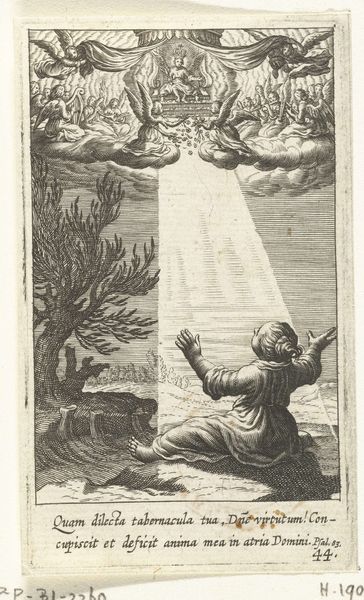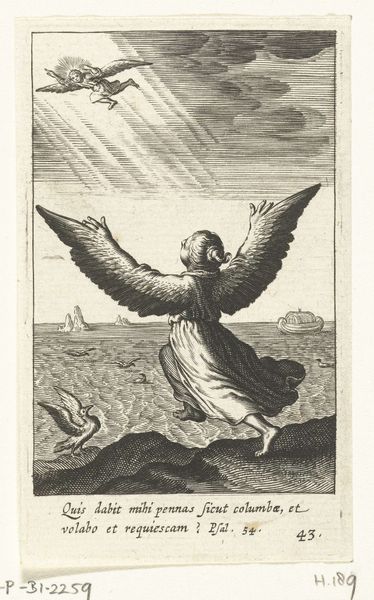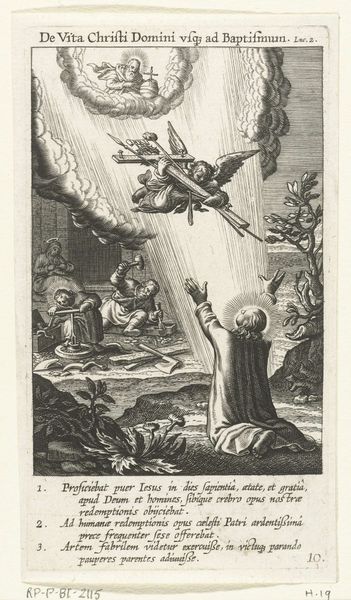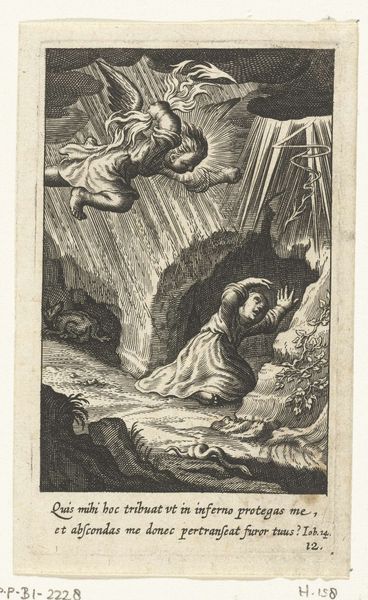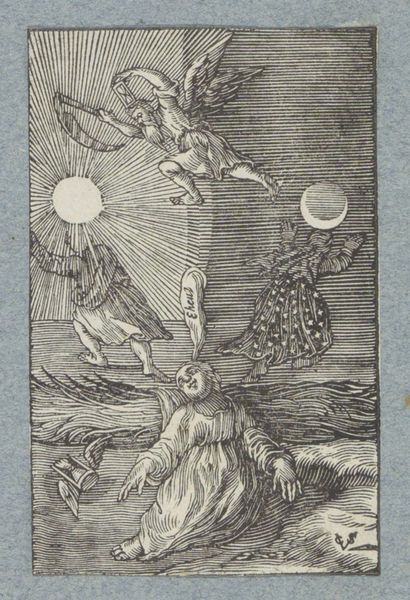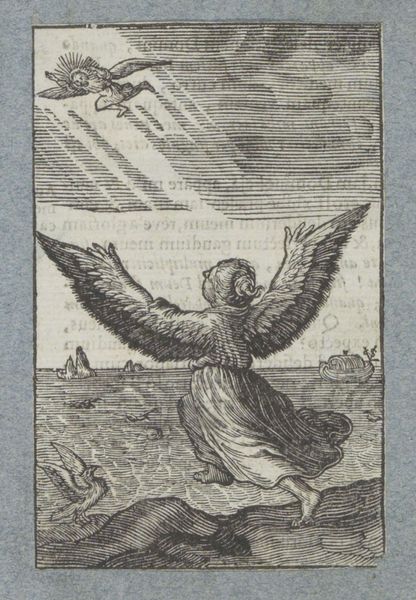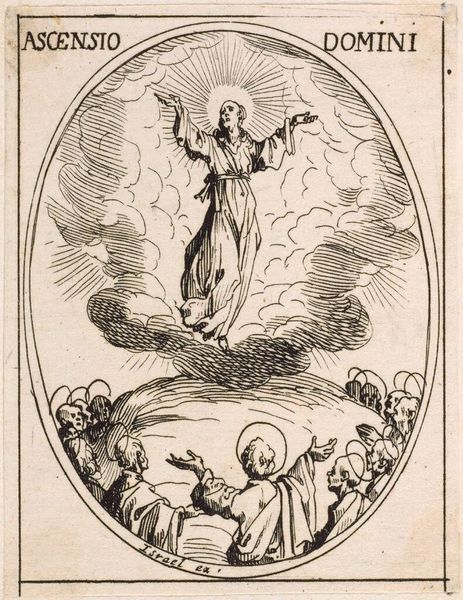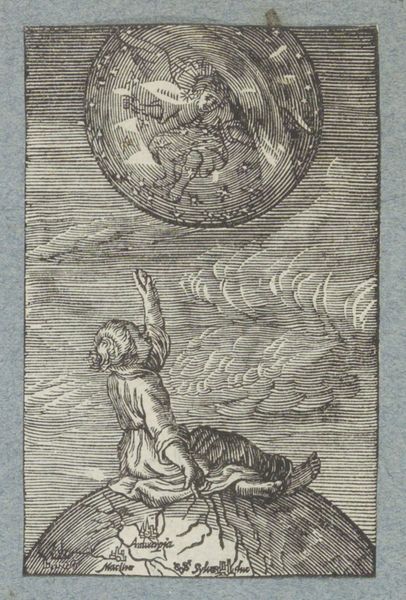
print, engraving
#
allegory
#
baroque
# print
#
pen sketch
#
old engraving style
#
figuration
#
line
#
history-painting
#
northern-renaissance
#
engraving
Dimensions: height 96 mm, width 57 mm
Copyright: Rijks Museum: Open Domain
Editor: This is "Kind betreurt het voorbijgaan van de tijd," or "Child regrets the passage of time," a print made by Boëtius Adamsz. Bolswert between 1590 and 1624. It’s held at the Rijksmuseum. There’s a real feeling of melancholy that comes across; it’s like the figures are trapped between darkness and light. What do you see in this piece? Curator: Well, immediately, the symbolism leaps out. Consider the sun and moon; potent images relating to opposing yet integrated energies – day and night, consciousness and the subconscious. Note the winged figure with the scythe overhead; what does that evoke? Editor: Definitely a grim reaper type of figure. Curator: Precisely. This isn’t just about time passing; it’s a meditation on mortality, a persistent theme in art of this era. And look at the child's gesture, it appears that the child is pleading to a vapor rising before him. Vapor as a sign for one's last breath? This suggests a cycle, a lament perhaps for lost innocence, for a past idealized. How do these visual metaphors speak to you? Editor: The symbols paint a strong picture. There's almost a claustrophobic feeling given the limited space, reinforcing the feeling of inevitable destiny that hangs over all. Curator: Indeed. The piece encourages us to contemplate how we, like the child, confront the relentless flow of time, a potent visual commentary on the human condition across centuries. The image asks, are we active agents or merely beings buffeted by circumstance? Editor: I hadn’t thought about it that way. Seeing how all these symbols connect makes it much more profound. Curator: Recognizing how recurring symbols permeate history helps unlock art's power, giving insights into diverse worldviews that stretch through the ages. Editor: I’ll definitely be more mindful of visual language when I’m looking at art from now on.
Comments
No comments
Be the first to comment and join the conversation on the ultimate creative platform.
